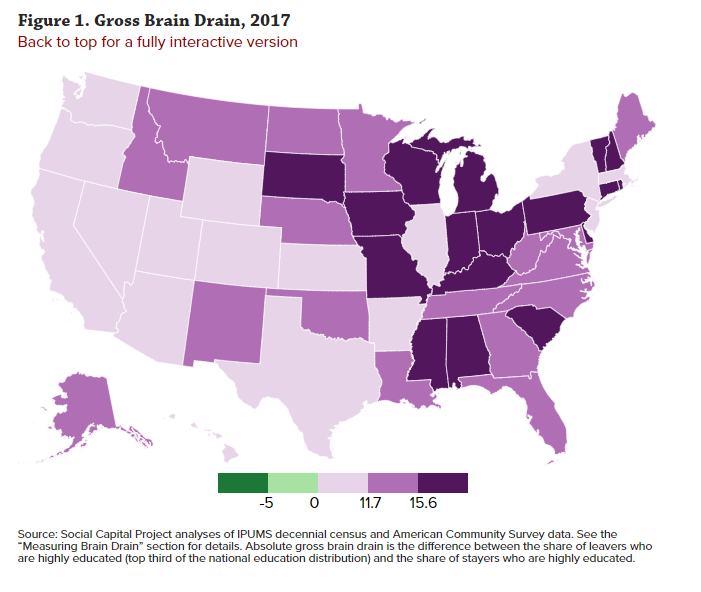New research from Congress’ Joint Economic Committee’s Social Capital Project finds that the migration of highly-educated adults toward dynamic states and major metropolitan areas is accentuating America’s geographic divisions. Using census data from 1940 to the present, the authors define “brain drain” as someone in the top third of the national education distribution who resides in a state other than their state of birth between the ages of 31 and 40. Their interactive, data-rich analysis finds that the states that are doing the best cluster around the Boston-Washington corridor and on the west coast, while states in the South and the Midwest/Great Lakes fare worse when it comes to attracting and retaining the highly educated. The authors also analyze changes in states and regions over time, as well as conclusions for what this means for social capital nationwide.

Losing Our Minds: Brain Drain Across US States, focuses on gross brain drain (the difference between the share of leavers who are highly educated and the share of stayers who are highly educated) and net brain drain (the difference between the share of leavers who are highly educated and the share of entrants who are highly educated). The map above shows gross brain drain, though other maps and metrics can be found here.